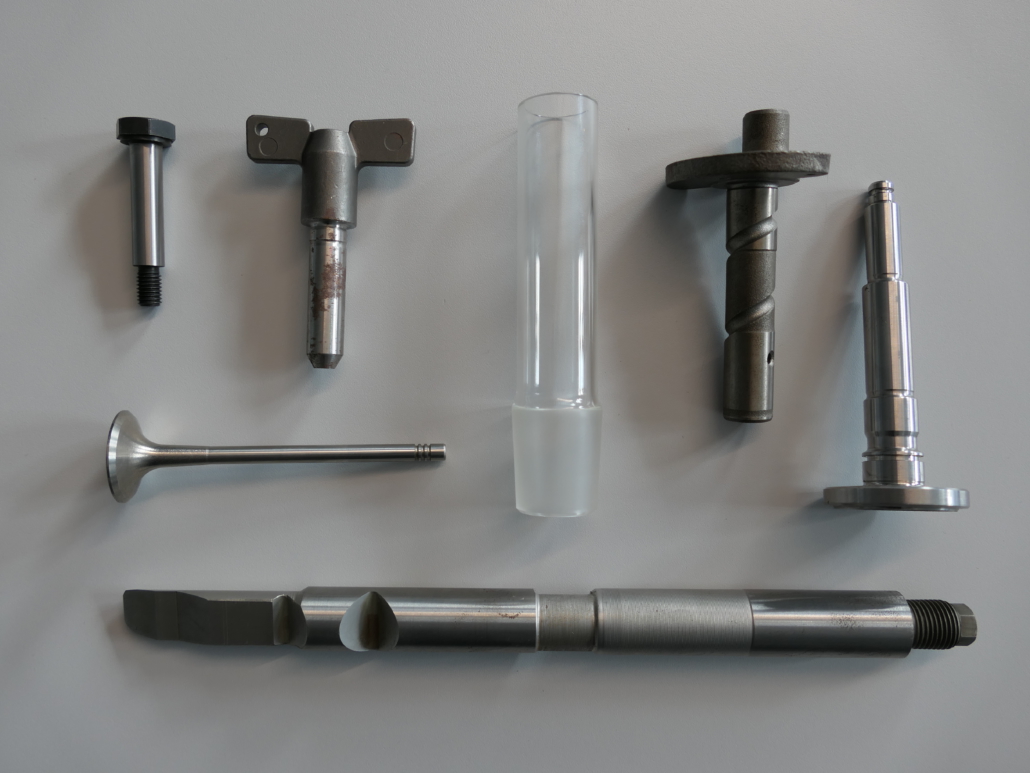Grooving loops
With plunge-cut grinding, the grinding length is limited to the width of the grinding wheel. However, several offset diameters can be ground at the same time. The workpieces can also have a head or collar, for example.
- Ball stud
- Caps
- Container for fountain pen
- Screws
- Tins
- Taper pins
- already pre-turned cones
- slightly tapered twist drills
If several different diameters are ground simultaneously on one workpiece within the wheel width, exactly concentric fits are achieved. For plunge-cut grinding, a plunge-cut workpiece support fixture (without guide jaws) with a plunge-cut workpiece support is used. In order to achieve a clear axial position of the workpiece, the regulating wheel is inclined by approx. 0.5 degrees so that the workpiece is pulled between the wheels at a low feed rate until it stops at an adjustable stop. For loading profiled workpieces, we use different loading devices adapted to the workpiece and the sanding process. Many workpieces, especially parts with only one diameter, can also be automatically ejected with an ejector after sanding.
In plunge-cut grinding, it is also possible to grind a fit at the end of a relatively long workpiece. For this purpose, the workpiece is supported in a prismatic support or between rollers outside the wheel. To grind tapers with a taper angle of up to 4 degrees, the regulating wheel is swiveled sideways to create a tapered grinding gap. The grinding wheel and regulating wheel remain cylindrical. If steeper cones are to be ground, the grinding and regulating wheel must be dressed at an angle of half the cone angle. The workpiece support must then also be set at this angle.
We equip our machines with profile dressing devices so that we can dress grinding and regulating wheels for plunge-cut grinding of workpieces with offset diameters and profiles. These work according to the template principle. The sleeve slide rests against the template with the spring-loaded feeler nose and is guided along it during dressing. The desired profile is transferred to the pane by shaping the template.
The same profile dressing device is also used to dress the wheels for through-feed grinding. The templates are then shaped in such a way that a grinding gap with a slight lead-in and lead-out bevel is created. We also offer optional zero templates or CNC dressers.




